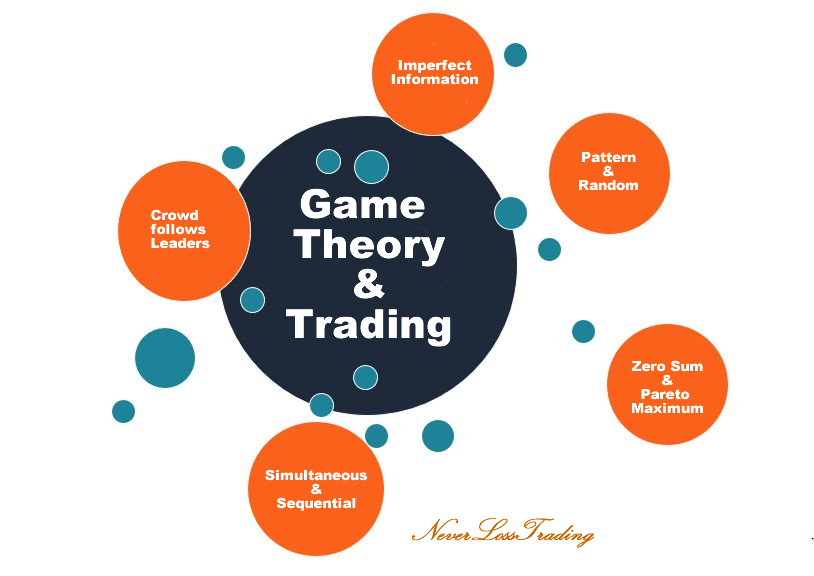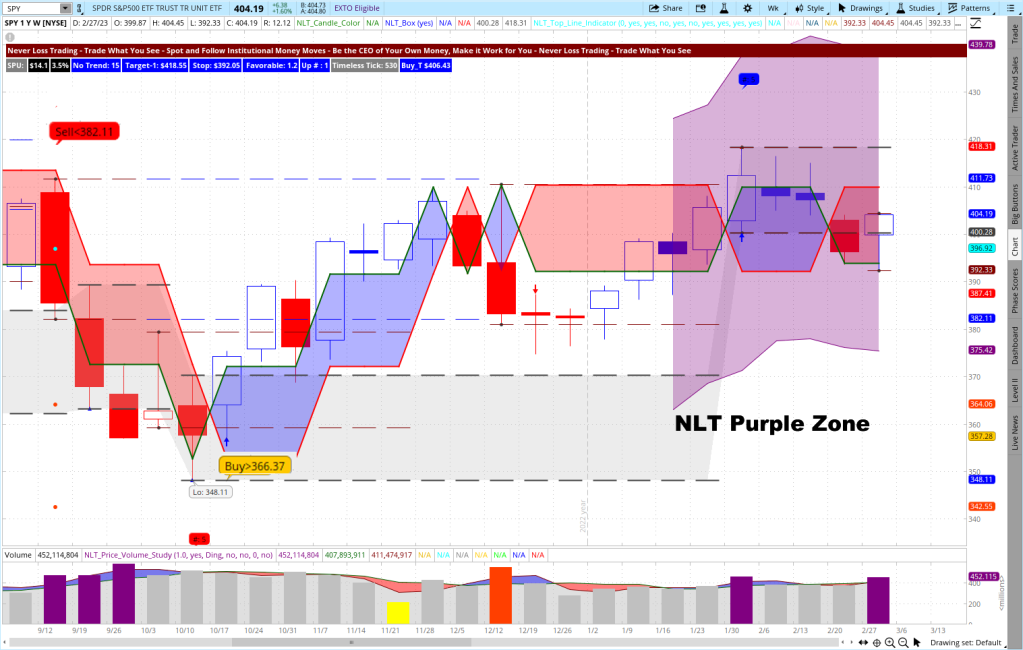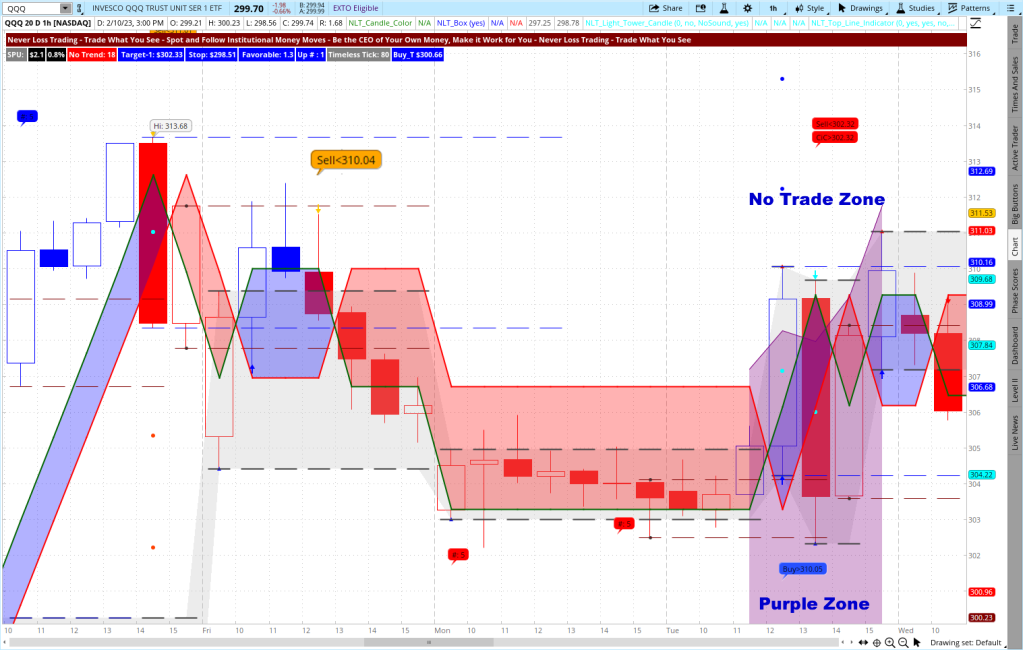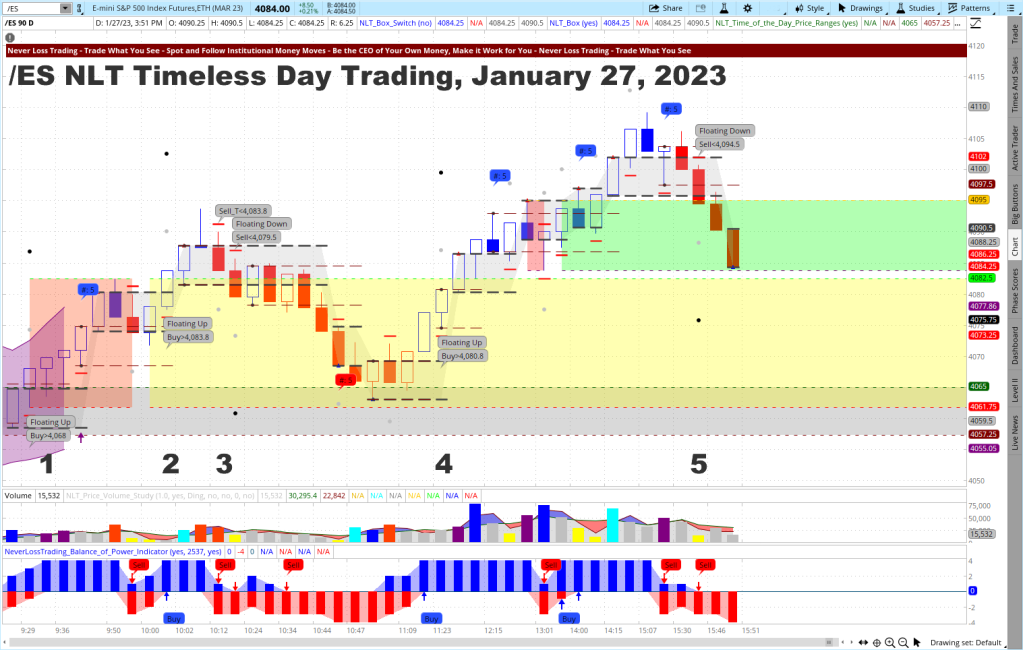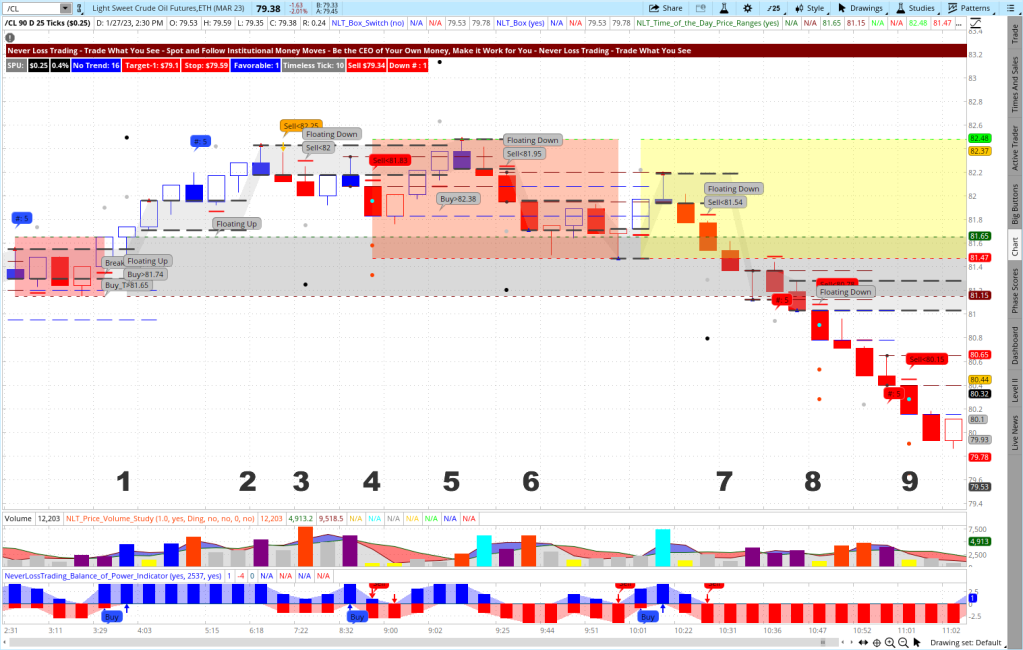As a day trader, you compete with institutional-run computers that can process information faster and execute trades more efficiently than humans. However, there are still opportunities to act less predictably and capture actual price turning points. Successful day trading requires knowledge, skill, and discipline. Staying focused on your goals and avoiding being swayed by emotions or market fluctuations is essential. Competing and succeeding in day trading is possible with the right approach, system, and plan. Read on for the most recent examples.

"Timeless trading" refers to a strategy that considers consistent price increments as the decision-making basis instead of price movement over time. This way, time is no more a critical variable for forming trading or investing decisions. Our systems define which assets provide a solid basis for price moves, and we follow them with the NLT Timeless Concept.
NLT Timeless charts use system-defined price increments to determine crucial price turning points to act upon. For example, on the chart, candles are drawn purely price based: when the price movement exceeds the specified increment, a new candle is added. With the help of indicators, traders can make high-probability decisions, where the system spells out the price threshold for entering a trade, exiting and stopping, keeping risk and reward always in a meaningful balance.
A prerequisite for day traders: you must withstand the temptation to trade frequently instead of more accurately. You can increase your trading accuracy using dynamic, less predictable entries, exits, and stops. As a trader, you are a probability thinker, which means there is no 100% certainty that your decision will lead to a positive outcome. More frightening: 76% of day traders are losing money. Trading is not a game where the smartest are necessarily the best. If IQ were a ticket to riches in the market, many more successful traders would be there. From our experience, you need to put the odds in your favor by operating with a system and rules of 65% or higher predictability; else, the chance for success will be random.
The worst trader has positive trades, but it is not about those but your average winning balance. Only when this is positive are you trading with an expectation of producing a return from your financial market investments.
What is the basis of your decision-making, and do you want to better your trading or justify that you were right because you had random wins?
Make a change to your trading:
- Decide on high-probability price turning points
- Be less predictable in your actions
- Follow a plan for trading success and strive for a budget
Read on to see how our charts tell when to buy or sell! This article is put together on the weekend of March 19, 2023, and we pick day trading examples of and into the last trading day: March 17, 2023. In our chart appraisal, we will accept each signal as it appears while we teach how to select higher over lower probability setups in our training and coaching sessions.
Trading is not an easy career: when you add up what it costs to not act at high probability price-turning points, you might be open to investing in a high-probability system and appropriate education.
We highly propose following a business plan for trading success that shall entail:
- Acting with a system probability > 65%
- Mechanical rules for entry, exit, and stop
- Trade at perfect moments only
- Consider overall factors, patterns
- Risk and reward in an acceptable balance
- Risk-averse trading
- Holding positions to target
- Do not add to losers
- Stick with a trading strategy. Follow a business plan – action plan and financial plan
- Trade for meaningful price moves
- Systematic trading
- Having a mentor to learn from
You can increase your trading accuracy using dynamic, less predictable entries, exits, and stops.
The typical problem for a trader: In hindsight, you know what happened, and we want to help you forecast the future price happening with high predictability.
Money flow accepts price as the resulting variable of a change in supply and demand and specifies potential price move setups with clearly defined:
- Entries (price threshold)
- Exits (targets)
- Stops (wrong assumption)
- All dimensions are prepared and defined when the entry conditions are fulfilled
With our systems and strategies, we want to help you to higher accuracy:
- Only accepting a trade when the direction is confirmed
- Exiting at a pre-defined target, preventing the price from pulling back, and taking your profits away before you realize them
- Choosing an adequate stop; so you are not taken out of a trade by a too-tight stop and keeping reward and risk in a meaningful balance.
A Quick tip: buyers and sellers move the market; whoever has the upper hand moves the market in their direction.
With our indications, we simplify life for you as a trader and let the chart tell when to buy or sell, specifying all decision-making dimensions at once:
- Entry Conditions: Execute buy-stop or sell-stop orders at pre-defined price thresholds at an assumed high probability
- Exit Condition: When is the target reached
- Stop Condition: When are you wrong and exit
- Risk Management: Risk limiting and risk-adjusted by considering the Relation of (Entry-Exit) / (Entry – Stop)
When day trading for pre-defined price moves, positions are kept open for a couple of bars/candles but permanently close the same day.
Our systems define the price increment to choose for setting up the charts, specifying two ranges:
- Shorter-term: holding open positions between two and 20 minutes
- Longer-term: holding open positions for 20 minutes to hours
We share examples for the E-Mini S&P 500 futures contract and Crude Oil futures, our most favored assets for day trading.
E-Mini S&P 500 Contract, March 14 -17, 2023

Chart Analysis: Four trade situations to discuss with the following conditions:
Situation-1: Sell < $3,890.80 was indicated at 6:40 a.m. ET and came to target at 9:30 a.m. ET. The gray dot on the chart is the trade target the red crossbar is the stop.
Situation-2: The combination of Buy>3,814.80 and Floating indicated a strong upside price move potential. The trade opened at 2:20 p.m. ET and reached the target at 3:50 p.m. ET.
Situation-3: We will teach in our mentorship why you would not have accepted the short signal; however, we appraise indications mechanically here, and then this trade got stopped.
Situation-4: Buy > $3943 was confirmed around 10:50 a.m. ET and came to target around 11:30 a.m. ET.
In total: three winning and one losing trade in the most recent development of the E-Mini S&P 500 Futures contract with the help of the NLT Timeless Chart. Let us check Gold:
Crude Oil Contract, March 14 - 17, 2023

The chart shows six potential trade situations. Please check which indications came to the system-defined target (gray dot) and which got stopped (red crossbar at the signal candle):
The choice is up to every trader; with the periods required for trades to enter and realize, you do not have to rush into trades.
If you like to act in a more fast pace environment, we offer you the NLT shorter-term day trading setups and add some examples.
E-Mini S&P 500 Contract, March 17, 2023

The chart shows six trade situations that reached their target between 7:30 a.m. ET and 10:30 a.m. ET. Understanding that we are acting under uncertainty and cannot always be 100% correct in forecasting price moves, we mostly close the books after two winning trades.
Our examples show multiple trading opportunities: imagine what this would do to your trading account if you landed those.
If you like to see how our systems work realtime:
contact@NeverLossTrading.com Subj.: Demo
Indeed, our systems work for other assets. For example, the following chart shows the Gold Futures contract price development with NLT Timeless Trading Indications on the afternoon of March 17, 2023.
Gold Futures Contract, March 17, 2023

The chart shows five trade situations. Appraising them mechanically: four reached their target, and one got stopped (situation-4).
To succeed in trading, you best work with an experienced coach and learn much about trading. Our #1 competitive advantage is the support and customer service we offer. We work one-on-one with you to specify what we teach to your specific wants and needs.
Ongoing education and mentoring are crucial to longevity in this business. Veteran traders have been through more ups and downs than you can imagine. So, experienced pros have probably experienced whatever you're going through.
We are happy to share our experiences and help you build your trading business. Trading is not a typical career, and you best learn from those who are long-term in this business to cope with the rollercoaster of the financial markets.
Here is another example of Crude Oil Futures:
Crude Oil Futures Contract, March 17, 2023

The chart shows five trade situations, and we let you appraise if they came to their system-set target (gray dot on the chart).
The markets changed, and if you do not change your trading strategies with them, it can be a very costly undertaking.
We are here to support you. Based on working one-on-one, spots are not always available.
Good trading,







